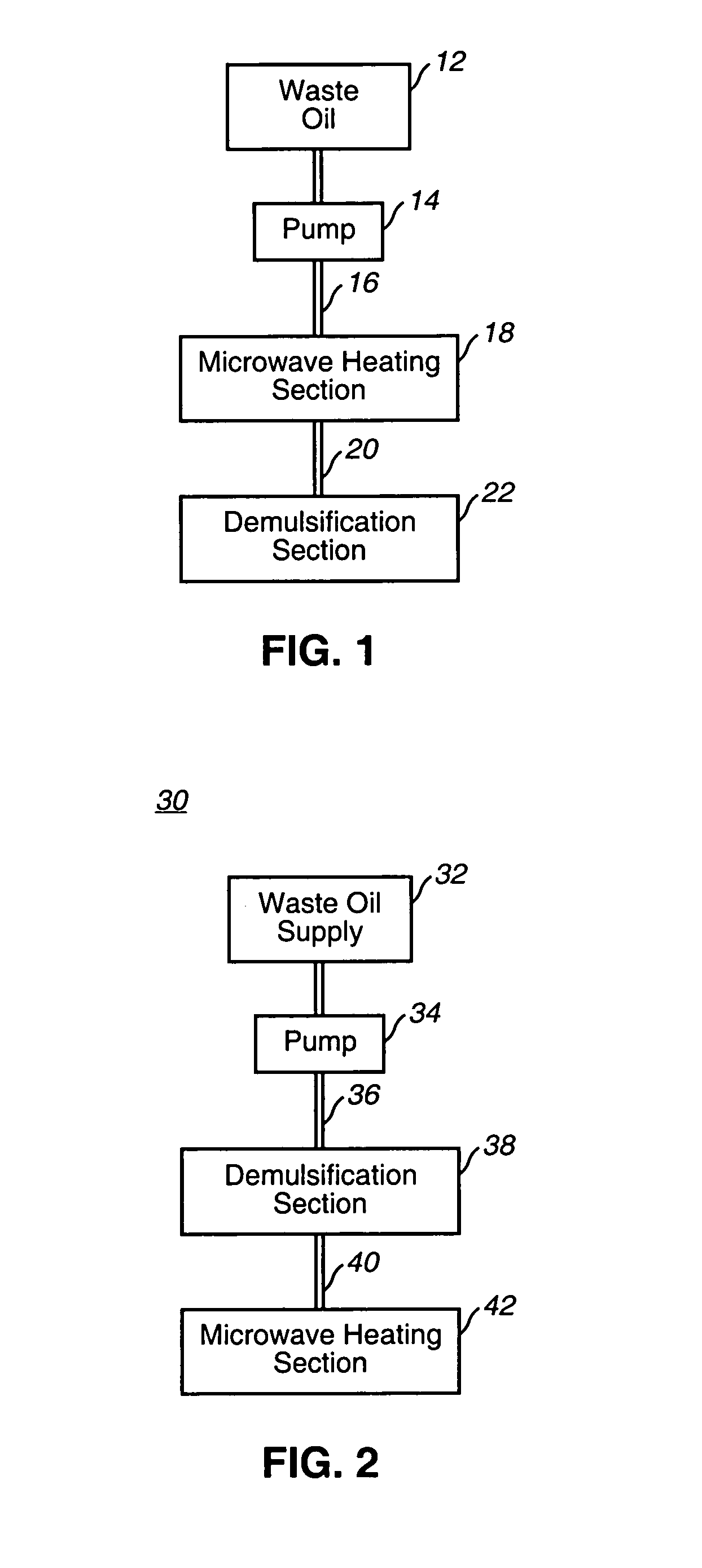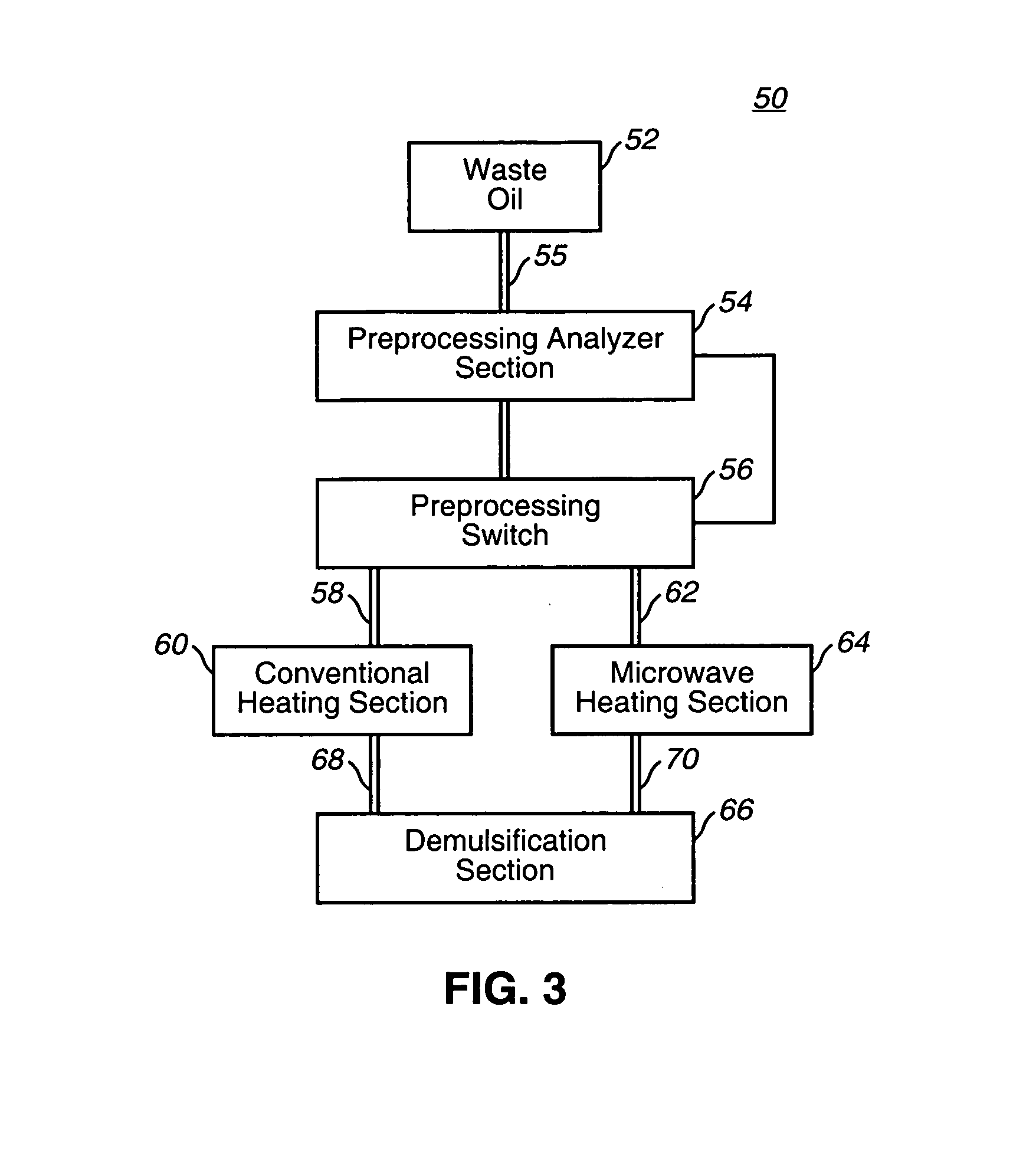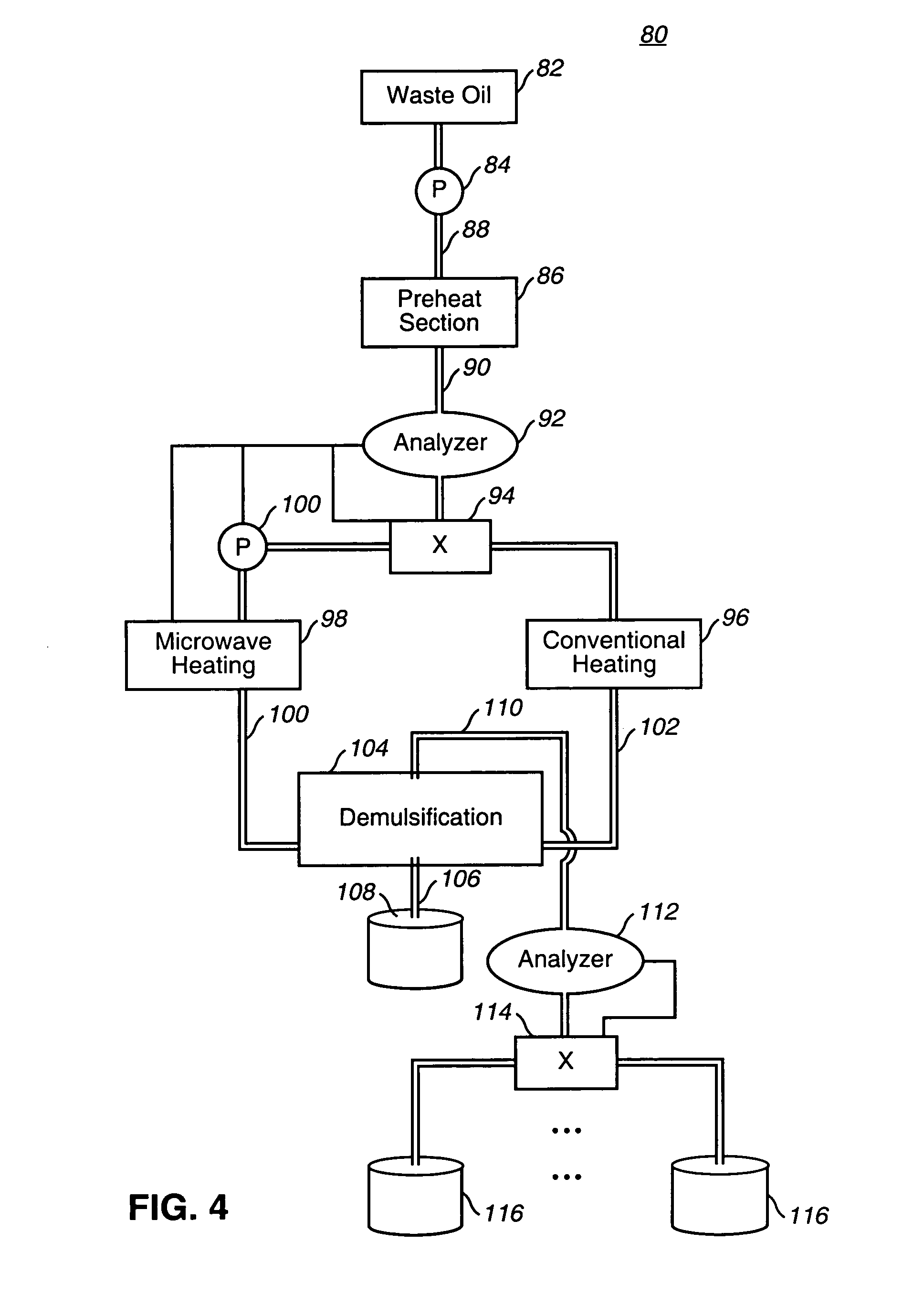Process for treating waste oil
a technology for treating waste oil and waste oil, which is applied in the field of purification, can solve the problems of only efficiently disposing of used oil, no equipment available to easily and cost-effectively remediate waste streams on-site, and potential liability of the generator
- Summary
- Abstract
- Description
- Claims
- Application Information
AI Technical Summary
Benefits of technology
Problems solved by technology
Method used
Image
Examples
case 1
[0093] Conventional Heating
[0094]100 mL of slop oil having an estimated 11% water by volume was dosed with 3000 ppm of 906 polymeric demulsifier (Midwestern Custom Chemicals). The sample then was place in a 60° C. hot water bath for thirteen hours. The sample was then allowed to cool for eleven hours. A visual measurement showed 2% water released four hours after the start of heating. The sample still had 2% water released (by volume) after allowing it to cool for eleven hours.
case 2
[0095] Microwave Heating-1
[0096]Slop oil having an estimated 11% water by volume (same as above case 1) was dosed with 3000 ppm of 906 demulsifier from Midwestern Custom Chemicals. Note that this case was a semi-continuous processing, while case 1 was a batch processing. The oil was then heated by microwave energy to approximately 49° C. The oil was then placed in a 60° C. hot water bath for thirteen hours. The sample was then allowed to cool for eleven hours. 100 mL samples were drawn off for testing. At four hours after being placed in the hot water bath the sample showed 25% water released by volume. After allowing the oil to cool for eleven hours the sample showed virtually all water released.
case 3
[0097] Microwave Heating-2
[0098]This case is similar to case 2 except the oil was not placed in the hot water bath. After the microwave heating the sample was allowed to cool to ambient temperature. The sample showed no visual sign of separation.
[0099]Heating before Demulsification
PUM
| Property | Measurement | Unit |
|---|---|---|
| temperature | aaaaa | aaaaa |
| temperatures | aaaaa | aaaaa |
| temperature | aaaaa | aaaaa |
Abstract
Description
Claims
Application Information
 Login to View More
Login to View More - R&D
- Intellectual Property
- Life Sciences
- Materials
- Tech Scout
- Unparalleled Data Quality
- Higher Quality Content
- 60% Fewer Hallucinations
Browse by: Latest US Patents, China's latest patents, Technical Efficacy Thesaurus, Application Domain, Technology Topic, Popular Technical Reports.
© 2025 PatSnap. All rights reserved.Legal|Privacy policy|Modern Slavery Act Transparency Statement|Sitemap|About US| Contact US: help@patsnap.com



